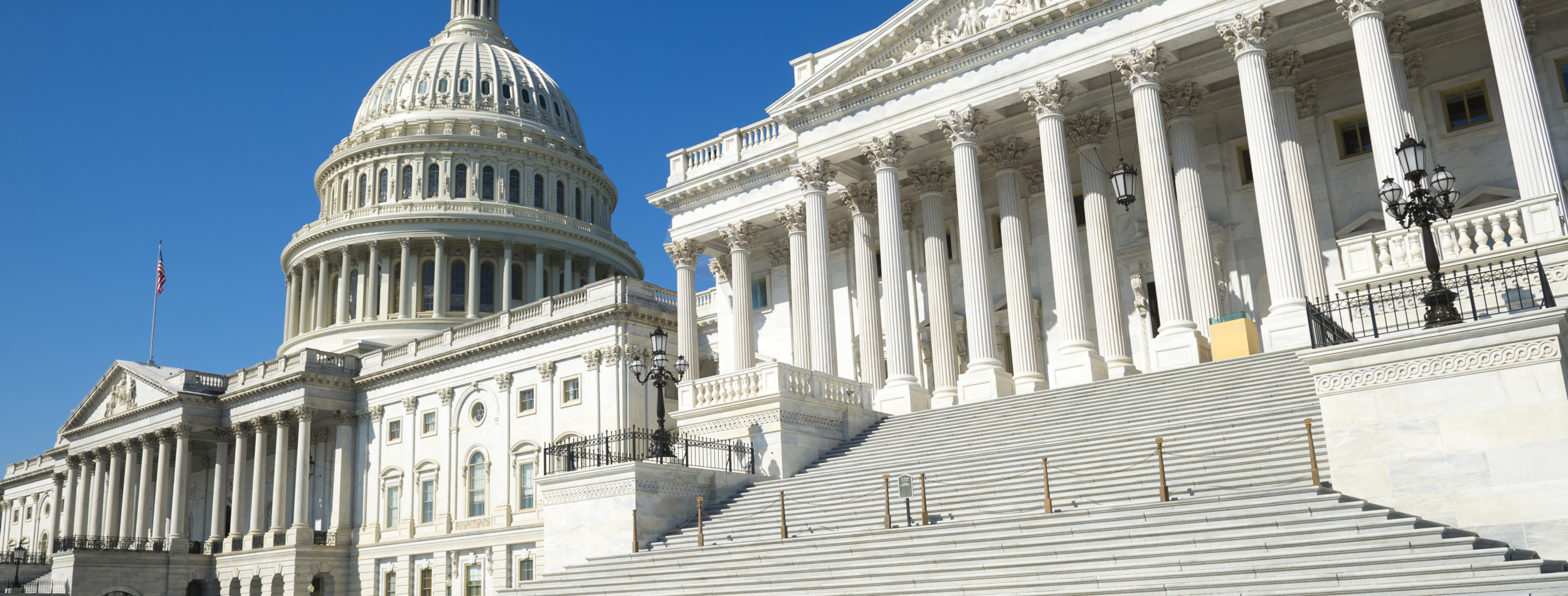

President Biden delivers his first State of the Union
Share this
President Biden delivered his first State of the Union on March 1. Facing a challenging international environment with Russia’s invasion of Ukraine and domestic political headwinds, Biden sought to use the annual platform to condemn the invasion and assert resolve against it, tout his administration’s achievements and call on Congress to pass his agenda.
He went to Capitol Hill carrying a net approval rating close to his worst since taking office and with Republicans looking to November’s elections as a chance to recapture Congressional majorities. The speech was therefore noteworthy because there was an unusual amount of bipartisan expression at the top. As Biden spoke about Ukraine for the first 12 minutes to a chamber full of Representatives and Senators waving and wearing the colors of the Ukrainian flag, there were repeated shows of support from both political parties in applause breaks.
Zurich is strongly committed to helping alleviate suffering in Ukraine, and the Z Zurich Foundation has launched a major fundraising effort to mobilize support across our businesses globally for humanitarian relief efforts. We continue to monitor developments as Zurich places the highest priority on compliance with applicable laws and regulations, including economic sanctions Biden discussed.
President Biden turned to highlight accomplishments in the American Rescue Plan and the bipartisan infrastructure law. Of note for Zurich were provisions related to pre-disaster mitigation and climate resiliency, as well as a surety priority that requires payment and performance security bonding on certain federally funded public-private partnership projects.
He did not use the words “Build Back Better,” the alliterative name for his signature social spending agenda that has been stalled in Congress since last summer. Instead, he called for action singling out a range of proposals from the package including more money to fight climate change, universal pre-K, higher taxes on corporations, paid leave and more affordable housing. He also advocated to bolster American competition with China and to lower prescription drug prices.
His language did not appeal exclusively to Democrats but made some overtures to Republicans. He rejected calls to “defund the police,” and on immigration he said it’s possible to both secure the border and fix the flaws in our current system. He closed his address by outlining a “unity agenda” largely focused on targeted health and well-being initiatives.
Republican Congressional leaders chose Iowa Gov. Kim Reynolds to provide a response. She focused on inflation, the withdrawal from Afghanistan in 2021, crime and school closures. As she put forth different policy arguments, she overlaid those with an appeal to personal responsibility and the contributions of individuals to their communities.
Finally, the speech was noteworthy as an event in the Capitol that looked as close to a pre-pandemic event in Congress since restrictions went in place. With no mask mandate, the chamber and its occupants looked close to “normal” as the President announced an initiative to move “forward safely, back to more normal routines.” He spoke of federal workers returning to offices and urged that more broadly. You can listen to Zurich’s return to work insights in our recent podcast on the evolution of business travel.
President Biden sought to assert American leadership on the world stage, offer an economic vision, stress an evolution in the pandemic, and discuss new policy horizons. In the near term, policymakers need to advance a government funding measure and additional aid to Ukraine before the Senate turns to the confirmation process for Ketanji Brown Jackson to the U.S. Supreme Court. Focus will soon turn to the campaign trail, and we will see the resulting implications of these themes and calls to action.
By David Mork

Assistant Vice President, Federal Affairs
President Biden delivers his first State of the Union
Share this
President Biden delivered his first State of the Union on March 1. Facing a challenging international environment with Russia’s invasion of Ukraine and domestic political headwinds, Biden sought to use the annual platform to condemn the invasion and assert resolve against it, tout his administration’s achievements and call on Congress to pass his agenda.
He went to Capitol Hill carrying a net approval rating close to his worst since taking office and with Republicans looking to November’s elections as a chance to recapture Congressional majorities. The speech was therefore noteworthy because there was an unusual amount of bipartisan expression at the top. As Biden spoke about Ukraine for the first 12 minutes to a chamber full of Representatives and Senators waving and wearing the colors of the Ukrainian flag, there were repeated shows of support from both political parties in applause breaks.
Zurich is strongly committed to helping alleviate suffering in Ukraine, and the Z Zurich Foundation has launched a major fundraising effort to mobilize support across our businesses globally for humanitarian relief efforts. We continue to monitor developments as Zurich places the highest priority on compliance with applicable laws and regulations, including economic sanctions Biden discussed.
President Biden turned to highlight accomplishments in the American Rescue Plan and the bipartisan infrastructure law. Of note for Zurich were provisions related to pre-disaster mitigation and climate resiliency, as well as a surety priority that requires payment and performance security bonding on certain federally funded public-private partnership projects.
He did not use the words “Build Back Better,” the alliterative name for his signature social spending agenda that has been stalled in Congress since last summer. Instead, he called for action singling out a range of proposals from the package including more money to fight climate change, universal pre-K, higher taxes on corporations, paid leave and more affordable housing. He also advocated to bolster American competition with China and to lower prescription drug prices.
His language did not appeal exclusively to Democrats but made some overtures to Republicans. He rejected calls to “defund the police,” and on immigration he said it’s possible to both secure the border and fix the flaws in our current system. He closed his address by outlining a “unity agenda” largely focused on targeted health and well-being initiatives.
Republican Congressional leaders chose Iowa Gov. Kim Reynolds to provide a response. She focused on inflation, the withdrawal from Afghanistan in 2021, crime and school closures. As she put forth different policy arguments, she overlaid those with an appeal to personal responsibility and the contributions of individuals to their communities.
Finally, the speech was noteworthy as an event in the Capitol that looked as close to a pre-pandemic event in Congress since restrictions went in place. With no mask mandate, the chamber and its occupants looked close to “normal” as the President announced an initiative to move “forward safely, back to more normal routines.” He spoke of federal workers returning to offices and urged that more broadly. You can listen to Zurich’s return to work insights in our recent podcast on the evolution of business travel.
President Biden sought to assert American leadership on the world stage, offer an economic vision, stress an evolution in the pandemic, and discuss new policy horizons. In the near term, policymakers need to advance a government funding measure and additional aid to Ukraine before the Senate turns to the confirmation process for Ketanji Brown Jackson to the U.S. Supreme Court. Focus will soon turn to the campaign trail, and we will see the resulting implications of these themes and calls to action.
By David Mork

Assistant Vice President, Federal Affairs



